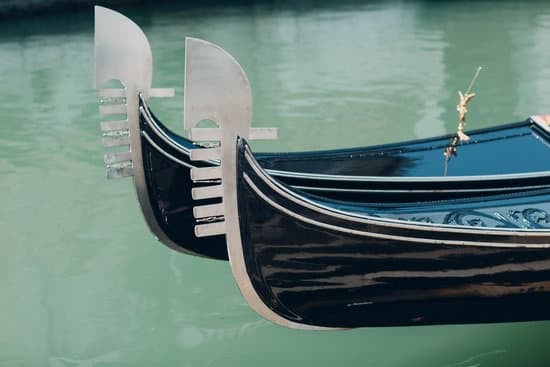When it comes to breathtaking landscapes, rich history, and mouthwatering cuisine, Southern Italy is an absolute treasure trove waiting to be explored. From the sun-soaked shores of the Amalfi Coast to the ancient ruins of Pompeii and the charming streets of Sicilian towns, this region offers a truly unforgettable experience for travelers.
In this comprehensive guide, we will take you on a journey through the hidden gems of Southern Italy, providing valuable insights on how to make the most of your visit.
Southern Italy exudes a distinctive allure and charm that sets it apart from other regions in the country. With its vibrant cities, idyllic beaches, and picturesque countryside dotted with olive groves and vineyards, every corner showcases a unique blend of beauty and history. Whether you’re seeking cultural immersion in Naples or venturing off-the-beaten-path in lesser-known towns like Matera or Tropea, there is something here for every type of traveler.
In this guide, we will delve into the best time to visit Southern Italy, discuss various transportation options, highlight must-visit cities and towns, delve into the region’s culture and cuisine, showcase historical sites and coastal escapes, explore national parks and scenic landscapes, as well as embrace local customs and traditions. So buckle up as we uncover the hidden gems of Southern Italy and guide you towards an unforgettable journey through this captivating region.
The Best Time to Visit Southern Italy
Southern Italy is a region that offers something for every traveler, regardless of the time of year. However, understanding the seasonal considerations can greatly enhance your experience and help you make the most of your visit. Here are some insights into the best times to visit Southern Italy:
- Spring (March to May): Spring is a fantastic time to explore Southern Italy. The weather is mild and pleasant, with temperatures ranging from the high teens to low twenties Celsius (60s to 70s Fahrenheit). This season allows you to avoid the large crowds that flock to Southern Italy during the summer months. It’s an ideal time for outdoor activities like hiking, visiting national parks, and exploring historic sites without feeling overwhelmed.
- Summer (June to August): Summer is peak tourist season in Southern Italy due to the warm weather and school vacations. The days are long and sunny, making it perfect for beach lovers and those looking for a vibrant nightlife scene. However, be prepared for larger crowds and higher prices during this period. It’s advisable to book accommodations and attractions well in advance if you’re planning a summer trip.
- Fall (September to November): Fall brings cooler temperatures along with smaller crowds, making it an excellent time for sightseeing throughout Southern Italy. The weather remains relatively warm until late October, allowing visitors to continue enjoying outdoor activities comfortably. Additionally, fall is also olive harvest season in many parts of Southern Italy, offering unique opportunities for culinary experiences and tours of olive groves.
- Winter (December to February): While winter might not be as popular as other seasons in terms of tourism, it has its own charm in Southern Italy. The region experiences milder weather compared to other parts of Europe during winter months, making it an appealing option for travelers seeking warmer climates without extreme heat or cold temperatures. Winter also showcases a different side of Southern Italy with Christmas markets and unique cultural festivities held throughout the region.
Considering these seasonal considerations, it’s essential to plan your visit to Southern Italy based on your preferences and priorities. Whether you prefer a quieter trip with fewer tourists or want to experience the region at its liveliest, there is a season that suits every type of traveler. Keep in mind the weather, crowd levels, and specific events taking place during each season as you plan your unforgettable journey through Southern Italy.
Transport Options
When it comes to exploring the diverse regions of Southern Italy, travelers have a range of transport options available to them. Whether you prefer the convenience of renting a car, the affordability and efficiency of public transport, or the luxury of hiring a private driver, there is a method that will suit your needs and preferences. However, navigating the transportation systems in Southern Italy may require some insider tips to ensure a smooth and stress-free journey.
One popular option for travelers is renting a car, which provides flexibility and freedom to explore at your own pace. Renting a car allows you to venture into more remote areas and experience hidden gems that can be difficult to reach by public transport. It also gives you the opportunity to take scenic drives along coastal roads or through picturesque countryside.
However, it’s important to note that driving in Southern Italy can be challenging due to narrow streets, tight parking spaces, and aggressive drivers. Additionally, some cities have restrictions on where cars can enter or park. Therefore, it is essential to familiarize yourself with local traffic rules and regulations before hitting the road.
For those who prefer not to drive, public transport is another viable option for getting around Southern Italy. The region has an extensive network of trains and buses that connect major cities and towns. Trains are generally considered one of the most efficient ways to travel between destinations within Southern Italy.
They offer comfort and convenience while allowing you to admire the beautiful landscapes passing by your window. Buses are another reliable mode of transportation for reaching smaller towns or places not serviced by trains. However, keep in mind that timetables may be less frequent in rural areas, so planning ahead is essential.
Lastly, hiring a private driver provides an added level of convenience and comfort during your travels in Southern Italy. This option is particularly popular for those who want personalized attention or have limited time available for transportation logistics.
A private driver can chauffeur you to your desired destinations, provide local insight and recommendations, and ensure a smooth and stress-free journey. However, it is important to consider the additional cost that comes with hiring a private driver, as this can significantly impact your travel budget.
Regardless of the transport option you choose, it is important to familiarize yourself with Southern Italy’s roadways, airports, and train systems in order to make the most of your journey. By doing so, you will be able to navigate the diverse regions of Southern Italy with ease and enjoy all that this enchanting destination has to offer.
| Transport Option | Advantages | Disadvantages |
|---|---|---|
| Renting a Car | – Flexibility and freedom to explore at your own pace
| – Challenging driving conditions (narrow streets, tight parking spaces)
|
| Public Transport (Trains) | – Efficiency and comfort for traveling between major cities
| – Less frequent timetables in rural areas
|
| Public Transport (Buses) | – Reliable mode of transportation for reaching smaller towns or places not served by trains
| – Less frequent timetables in rural areas
|
| Private Driver | – Personalized attention and local insights
| – Additional cost
|
Top Destinations in Southern Italy
Southern Italy is a region full of captivating destinations that are must-visits for any traveler. From bustling cities to charming towns, there is something for everyone in this part of the country. One city that should not be missed is Naples, known for its vibrant street life, historical sites, and delicious pizza. Exploring the narrow streets of the Spaccanapoli district or visiting the impressive archeological museum are just a couple of the many things to do in Naples.
Bari, located on the Adriatic Sea, is another top destination in Southern Italy. This coastal city offers a unique blend of history and charm. Stroll through Bari Vecchia (Old Bari) with its winding streets and historic buildings or visit the Cathedral of San Sabino which dates back to the 12th century. Don’t forget to try some local treats like orecchiette pasta and focaccia while you’re here.
Palermo, located on the island of Sicily, should also be on your list of places to visit in Southern Italy. The capital of Sicily, Palermo is a city of contrasts where ancient history meets modern culture. Explore its stunning architecture such as the Norman Palace and Cathedral or wander through colorful markets like Vucciria and Ballarò where you can sample local specialties like panelle (chickpea fritters) and cannoli.
While these cities offer a taste of Southern Italy’s urban life, there are also numerous smaller towns and villages that are worth exploring. Locorotondo in Puglia is known for its whitewashed houses adorned with colorful flowers while Alberobello is famous for its unique trulli houses. The hilltop town of Matera in Basilicata boasts impressive cave dwellings that have been designated as a UNESCO World Heritage site.
These are just a few examples of the captivating destinations waiting to be discovered in Southern Italy. Whether you prefer the hustle and bustle of a city or the tranquility of a small town, this region has it all. So, pack your bags and get ready to embark on an unforgettable journey through the must-visit cities and towns of Southern Italy.
Cultural Immersion
Southern Italy is known for its rich culinary heritage and mouthwatering regional specialties. From the savory pastas of Naples to the fresh seafood of Sicily, exploring the flavors of Southern Italy is a truly immersive experience for food lovers. To fully embrace the authentic cuisine of the region, there are a few tips and recommendations to keep in mind.
Discover Regional Specialties
Southern Italy is home to a wide variety of regional specialties, each with its own distinct flavors and traditions. In Naples, be sure to try the iconic pizza margherita, made with fresh tomatoes, mozzarella cheese, and basil. Taralli, a round-shaped biscuit-like snack flavored with olive oil and often sprinkled with spices like fennel or black pepper, is a popular treat found throughout Puglia.
In Calabria, ‘nduja is a fiery spreadable salami that adds a bold kick to any dish. And in Sicily, indulge in arancini – deep-fried rice balls usually stuffed with ragù (meat sauce), cheese, or spinach.
Indulge in Local Establishments
One of the best ways to experience authentic Southern Italian cuisine is by dining at local restaurants and trattorias. These family-run establishments pride themselves on preserving traditional recipes passed down through generations. Seek out hidden gems where locals frequent for an authentic taste of Southern Italy. In addition to restaurants, explore local markets for an immersion into the vibrant atmosphere and fresh produce that characterize Southern Italian cuisine.
Experience Food Tours
For those who want a deeper understanding of the local culinary scene, joining food tours can provide an insider’s perspective on Southern Italian gastronomy. A knowledgeable guide can take you to off-the-beaten-path eateries and introduce you to lesser-known dishes that may not be on typical restaurant menus. Food tours often include tastings of various regional specialties, from cheeses and cured meats to pastries and gelato.
Etiquette and Cultural Norms
Southern Italy has its own etiquette and cultural norms when it comes to dining experiences. It is customary to greet restaurant staff with a friendly “Buongiorno” (good morning) or “Buonasera” (good evening) upon entering. Unlike in some other countries, tipping is not as common or expected in Southern Italy, but leaving a small amount as a gesture of appreciation is appreciated. Additionally, it is considered polite to wait for everyone at the table to be served before starting a meal.
Exploring the authentic flavors of Southern Italy allows travelers to immerse themselves in the region’s rich culinary heritage. From trying regional specialties to indulging in local establishments and joining food tours, there are countless opportunities to savor the delights that Southern Italian cuisine has to offer. By respecting local customs and embracing the cultural norms related to dining experiences, visitors can truly experience the unique soul of Southern Italy through its delectable dishes.
Soak in History and Architecture
Southern Italy is home to numerous historical sites and architectural marvels that are sure to captivate any traveler with an interest in the past. From ancient ruins to medieval castles, this region offers a rich tapestry of history waiting to be explored. Whether you are a history enthusiast or simply appreciate the beauty of ancient architecture, Southern Italy has something to offer for everyone.
One of the most famous and must-visit historical sites in Southern Italy is Pompeii. This ancient Roman city was completely buried under volcanic ash from the eruption of Mount Vesuvius in 79 AD, preserving its buildings, artifacts, and even human bodies in remarkable detail.
Walking through the streets of Pompeii offers a glimpse into daily life during Roman times, with well-preserved houses, temples, theaters, and even a brothel. The site is extensive, so it’s recommended to hire a guide or join a guided tour to fully appreciate its historical significance.
In addition to Pompeii, Matera is another UNESCO World Heritage Site that showcases unique historic architecture. Known for its Sassi di Matera, which are cave dwellings carved into the rock formations of the town, Matera offers a surreal experience where visitors can step back in time.
These cave dwellings date back thousands of years and were once inhabited by families until they were abandoned in the mid-20th century due to poor living conditions. Today, many of these caves have been renovated into hotels, restaurants, and shops.
For those interested in Greek history and architecture, Agrigento is home to one of Southern Italy’s most impressive ancient Greek ruins – the Valley of the Temples. This archaeological park boasts seven well-preserved Doric temples dating back to the 5th century BC. The Temple of Concordia is particularly notable for its remarkable preservation and majestic columns. Aside from exploring these lavishly constructed temples, visitors can also enjoy stunning views over the surrounding countryside.
Historical Sites in Southern Italy
| Historical Site | Description |
|---|---|
| Pompeii | An ancient Roman city buried under volcanic ash, offering a unique insight into daily life during Roman times. |
| Matera | A UNESCO World Heritage Site known for its cave dwellings carved into rock formations, providing a glimpse into ancient living conditions. |
| Agrigento – Valley of the Temples | An archaeological park with well-preserved ancient Greek temples, including the Temple of Concordia and breathtaking views of the surrounding countryside. |
These are just a few examples of the historical sites that await visitors in Southern Italy. Exploring these ancient ruins and architectural wonders not only provides an educational experience but also allows for a deeper connection with the region’s storied past. Whether you’re an avid history buff or simply appreciate the beauty and significance of historic sites, Southern Italy offers a feast for the senses and an unforgettable journey through time.
Coastal Escapes
Southern Italy boasts some of the most stunning coastlines in the world, with its crystal-clear waters, picturesque beaches, and charming seaside towns. From the glamorous Amalfi Coast to the untouched beauty of Sicily, there are countless coastal escapes waiting to be explored. Here is a guide to uncovering the breathtaking beaches and islands of Southern Italy.
- Positano: Located on the enchanting Amalfi Coast, Positano is renowned for its pastel-hued buildings nestled against a backdrop of rugged cliffs. The town’s main beach, Spiaggia Grande, is a picture-perfect spot with its vibrant umbrellas and clear turquoise waters. Don’t miss taking a boat trip along the coast to witness the remarkable beauty of this region.
- Tropea: Situated in Calabria, Tropea captivates visitors with its stunning white sandy beaches and dramatic clifftop views. Swim in the azure Tyrrhenian Sea or explore hidden coves accessible only by boat. Don’t forget to sample some local delicacies such as red onion, which is unique to this area.
- Sicily: This captivating island offers an array of incredible coastal destinations. From Mondello Beach near Palermo to San Vito Lo Capo with its Caribbean-like vistas, Sicily has something for every beach lover. Venture further to discover smaller islands like Favignana or Lampedusa, known for their pristine waters and secluded hideaways.
Alongside these popular destinations, Southern Italy also has hidden gems waiting to be discovered:
- Cilento Coast: Located south of the Amalfi Coast, Cilento is an unspoiled paradise boasting long stretches of golden sand and crystal-clear waters. Enjoy picturesque towns like Acciaroli and Agropoli while immersing yourself in nature through activities such as hiking along the coastline or exploring the Cilento and Vallo di Diano National Park.
- Capri: Just off the coast of Naples, Capri is famous for its rugged landscape, glamorous lifestyle, and stunning beaches. Spend a day lounging on Marina Piccola or take a boat tour to explore the island’s hidden grottoes and caves. Don’t forget to ride the chairlift to Mount Solaro for panoramic views of the entire island.
- Sardinia: Known for its crystal-clear waters and pristine beaches, Sardinia is a true paradise for beach enthusiasts. Explore the charming Costa Smeralda with its turquoise bays and luxury resorts, or head south to Chia and discover its famous sand dunes and clear blue lagoons. For a more secluded experience, visit the lesser-known islands of La Maddalena Archipelago.
Whether you’re seeking relaxation on sandy shores or craving adventure on hidden islands, Southern Italy offers an abundance of coastal escapes waiting to be explored. With its stunning beaches, idyllic towns, and unforgettable experiences, this region will surely leave every traveler with lasting memories.
Embrace Natural Beauty
When exploring Southern Italy, it is impossible to overlook the breathtaking natural beauty that awaits visitors. This section will delve into the national parks and scenic landscapes that can be found throughout the region, offering opportunities for hiking, wildlife spotting, and taking in stunning vistas.
Discovering National Parks
Southern Italy is home to several national parks that boast diverse ecosystems and awe-inspiring natural wonders. One of the must-visit parks is Pollino National Park, located in Calabria and Basilicata. Known for its rugged mountains, dense forests, and deep gorges, Pollino offers countless opportunities for outdoor enthusiasts. Visitors can embark on hiking trails that lead through dense beech woods or summit peaks that offer panoramic views of the surrounding valleys.
Another notable park is Gargano Peninsula – a haven for nature lovers. Situated in Apulia, this region is characterized by lush forests, towering cliffs, and secluded beaches. The Umbra Forest within Gargano Peninsula is particularly enchanting with its ancient beech trees and abundant wildlife. For those seeking adventure, there are various caves to explore or boat trips available to admire the magnificent sea stacks known as “Faraglioni”.
Sila National Park in Calabria is yet another gem worth exploring. With its sprawling meadows, dense forests of pine and fir trees, and pristine lakes, Sila offers a serene escape from bustling city life. The park is perfect for activities such as birdwatching or horseback riding while taking in the picturesque surroundings.
Scenic Landscapes
In addition to national parks, Southern Italy boasts numerous other scenic landscapes waiting to be discovered. The Amalfi Coast is renowned worldwide for its dramatic cliffs plunging into sparkling azure waters while dotted with colorful towns perched precariously along the cliffside. Positano and Amalfi are just two examples of these idyllic coastal towns that offer stunning vistas and charming alleyways to explore.
For those seeking secluded beaches and unspoiled nature, Tropea in Calabria is a hidden treasure. The town is situated on top of cliffs overlooking turquoise waters, and the surrounding coastline is peppered with picturesque caves and coves waiting to be explored.
The Aeolian Islands off the coast of Sicily provide yet another opportunity for visitors to bask in natural beauty. With its stunning volcanic landscapes and crystal-clear waters, these islands offer breathtaking hiking trails, photo-worthy sunsets, and opportunities for snorkeling or diving among vibrant marine life.
Southern Italy’s national parks and scenic landscapes offer travelers an abundance of natural beauty to explore. Whether it’s hiking through ancient forests, immersing oneself in panoramic views, or discovering secluded beaches, this region will captivate outdoor enthusiasts and nature lovers alike.
Local Customs and Traditions
Southern Italy is not only known for its breathtaking landscapes and delicious cuisine but also for its rich cultural customs and traditions. Embracing the authentic Southern Italian way of life can truly enhance your travel experience and leave you with unforgettable memories. In this section, we will delve into the unique customs and traditions that make Southern Italy so special.
One important aspect of local customs in Southern Italy is their love for festivals. The region is known for its vibrant celebrations that showcase the deep-rooted traditions of the communities. From religious processions to lively folk dances, participating in these festivals allows visitors to witness the passionate spirit of the locals. Some notable festivals include the Holy Week processions in Trapani, Sicily and the Tarantella dance festival in Calabria.
Alongside festivals, music plays a significant role in Southern Italian culture. Traditional music forms like tarantella and pizzica can often be heard spilling out from local taverns or during festive gatherings. These lively tunes are accompanied by traditional dances that are deeply ingrained in the local heritage. Attending a musical performance or joining a dance workshop provides an opportunity to immerse yourself fully in the Southern Italian spirit.
Another fascinating aspect of Southern Italian culture is its commitment to traditional crafts. Each region has its own specialty, whether it’s ceramics from Amalfi Coast or intricate lacework from Puglia. Exploring local artisan shops not only supports the artisans but also gives you a chance to learn about their craftsmanship firsthand. You may even have an opportunity to participate in workshops where skilled artisans share their techniques.
When interacting with locals, it’s important to remember that family and community are highly valued in Southern Italy. Greetings with warm embraces and kisses on both cheeks are common when meeting new people or when greeting loved ones. Taking part in conversations about everyday life and showing genuine interest will undoubtedly endear you to many locals who are more than happy to share their stories and traditions.
By embracing the authentic Southern Italian way of life, you will gain a deeper understanding of the region’s culture and create lasting connections with its people. So, immerse yourself in the festivals, dance to traditional music, explore local crafts, and connect with the warm-hearted locals. These experiences will undoubtedly leave you with cherished memories that capture the essence of Southern Italy.
Conclusion
In conclusion, a journey through Southern Italy promises to create unforgettable memories and provide untold encounters. This enchanting region is filled with hidden gems, captivating cities, stunning beaches, and breathtaking natural landscapes that will leave travelers in awe. From the rich culinary heritage to the historical landmarks and the distinctive cultural customs, Southern Italy offers a truly immersive experience.
Whether you choose to visit during the bustling summer months or prefer a quieter exploration during the shoulder seasons, there are advantages and drawbacks to each time of year. However, no matter when you go, there will always be something extraordinary waiting for you in Southern Italy.
Throughout your journey, consider various transport options available to navigate the diverse regions of Southern Italy. Renting a car allows for flexibility and ease of exploring remote areas, while public transportation and private drivers offer convenience for those who prefer not to drive. Whether it’s winding roads or efficient train systems, there are insider tips that can help you navigate this beautiful region with ease.
When it comes to immersing yourself in the local culture, experiencing the authentic flavors of Southern Italy is essential. The culinary heritage is vast and varied, offering regional specialties that will tantalize your taste buds. Don’t miss out on dining at local restaurants, visiting bustling markets, and participating in food tours to truly indulge in authentic cuisine.
As you explore the historic sites and architectural wonders of Southern Italy, you’ll be transported back in time. From UNESCO World Heritage Sites like Pompeii to lesser-known off-the-beaten-path locations that offer a unique glimpse into history and culture – be prepared to soak up every moment.
The mesmerizing coastal escapes of Southern Italy should not be missed. With stunning beach towns like Positano and Amalfi enticing visitors with their beauty, as well as hidden coves waiting to be discovered on islands such as Capri and Sicily – make sure you take time to relax by the crystal-clear waters and let your worries fade away.
To truly appreciate the natural beauty of Southern Italy, venture into its national parks. Hiking through the lush forests and spotting unique wildlife in places like Pollino National Park or exploring the rugged landscapes of Gargano Peninsula will leave you speechless.
Lastly, embracing the local customs and traditions is an important aspect of any journey. Participating in festivals, enjoying traditional music, and learning about regional crafts will give you a deeper understanding of the Southern Italian way of life.
Frequently Asked Questions
What is the best way to get around southern Italy?
The best way to get around southern Italy is a combination of different transportation options. While there are some larger cities that have public transportation systems like buses and trains, these may not cover all the smaller towns and rural areas. To truly explore southern Italy, it is recommended to rent a car.
This will give you the flexibility to visit remote villages, coastal areas, and picturesque countryside that may not be easily accessible by public transport. Additionally, driving along the scenic coastal roads of the Amalfi Coast or exploring the historic sites of Sicily becomes much easier with your own vehicle. However, for city exploration within larger cities like Naples or Palermo, it is advisable to use public transportation due to limited parking spaces and heavy traffic.
Do I need a car in southern Italy?
Whether you need a car in southern Italy largely depends on your travel plans and preferences. If you are mainly visiting major cities like Rome, Naples, or Palermo, having a car can be more of a hindrance than an advantage due to limited parking options, high traffic congestion, and restricted ZTL (limited traffic zones) areas in city centers.
Public transportation is generally well-developed within these cities and can take you to most attractions conveniently. On the other hand, if you plan on exploring rural areas, smaller towns, or remote coastal regions such as the Amalfi Coast or Puglia’s countryside, having a car becomes highly beneficial as it allows for greater flexibility and access to hidden gems off-the-beaten-path.
How many days is enough for southern Italy?
The number of days needed for Southern Italy primarily depends on individual preferences and interests as there is so much diversity in this region. However, dedicating at least one week to southern Italy would allow for a more comprehensive experience. You could spend three to four days exploring iconic destinations like Rome or Naples while reserving another few days for day trips from these major cities such as Pompeii or Capri.
For those seeking enchanting coastlines stretching from Positano to Amalfi or picturesque towns in Puglia, an additional four or five days would be ideal. Of course, if time permits, extending your stay allows for a deeper immersion into the rich culture, cuisine, and history of southern Italy, offering endless opportunities for exploration and relaxation.

I’m a passionate traveler, writer, and Italophile. My fascination with Italy’s history, art, and culture has led me on countless adventures across the Italian landscape. Through “I Live Italy,” I share my love for this extraordinary country and aims to inspire others to explore its boundless beauty.





